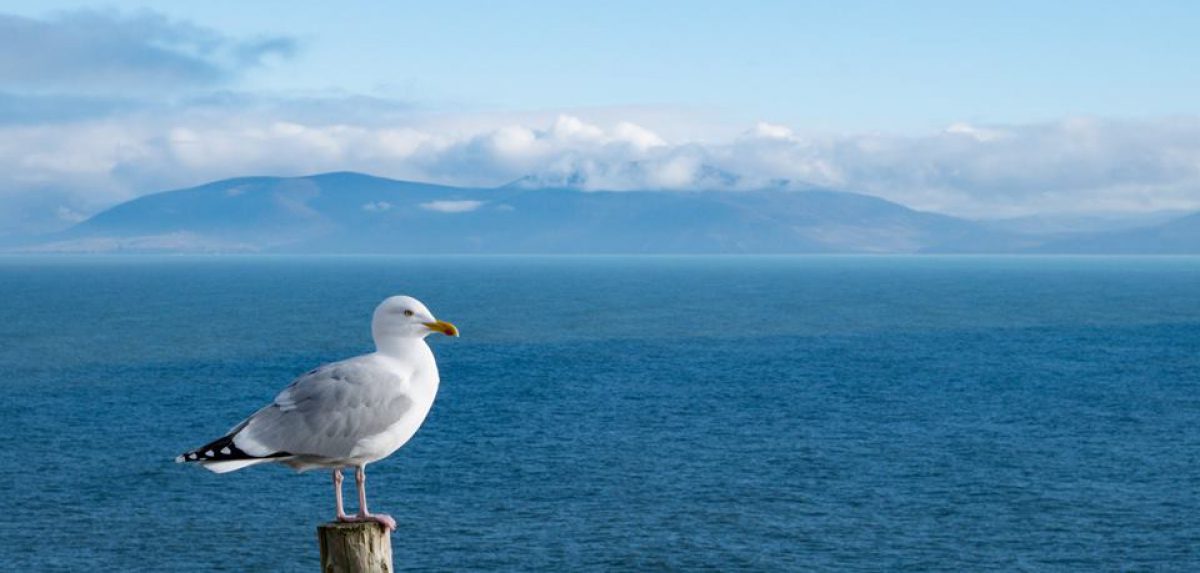Photo of Aughnanure Castle by P.J. McKenna
Fortune favours the strong
— O’Flaherty family motto
The O’Flaherty clan could hold a grudge. They once owned land near the mouth of the River Corrib, but the Norman De Burgh family arrived in the 12th century and persuaded them by means of pointed implements that they should leave. That land became Galway City, populated by 14 Anglo-Norman families who were eventually known as the “Tribes of Galway”.
The O’Flahertys never quite forgave the De Burghs or the other “tribes”, and they would be a thorn in the city’s side for centuries.
The O’Flahertys still had extensive holdings in Connemara (then known as lar-Connacht), and they decided to copy the Norman custom of building defensive castles. Aughnanure Castle, near Oughterard on Lough Corrib, was built in 1490 and was perhaps their most impressive. It was a pleasant location, built over the River Drisheen, surrounded by a forest of yew trees (Aughnanure in Irish is Achadh na nlubhar, “field of the yews”). Lavish banquets were held here, with chieftains from Connacht and further afield coming to enjoy the rich food and the strumming of musicians in the gallery.

If you arrived at Aughnanure without an invitation, you could be assured of a more challenging passage. There was a river to cross, then two layers of walls with guardsmen firing arrows at you. If you somehow got through the two thickly-reinforced front doors, you’d find yourself underneath the “murder hole” from where O’Flahertys and their servants would pour boiling water or oil on top of you.
But as a wise man would later say, “Just because you’re paranoid doesn’t mean they aren’t after you”. The O’Flahertys had good reason to be paranoid of their neighbours, as much as their neighbours had good reason to be paranoid of them.
On one occasion, the De Burghs decided that an attack on the castle would be suicidal and they should instead starve the O’Flahertys out. After a long siege, the O’Flahertys promised to pay a tribute of corn, cattle, and wool to the De Burghs if they’d just go away.
Three years later, this tribute was yet to be paid, and De Burgh sent his son to demand it. The young man arrived in the middle of a banquet and was invited to join the guests at the special seat of honour. Unfortunately for him, he brought up the subject of the tribute. The trapdoor beneath the seat was activated, plunging him into the river below.
Young De Burgh’s body was fished from the water and beheaded. O’Flaherty’s youngest son rode on horseback towards Galway city, the head swinging in a bag by his side. When he reached Tirellan Castle, home of the De Burgh clan on the outskirts of Galway, he was assumed to be bringing the tribute and the drawbridge was pulled down.
“Tell my Lord Earl,” young O’Flaherty yelled. “That this is the only tribute the O’Flahertys of lar-Connacht will ever pay to the De Burghs!”
At this, he threw the bloodied bag over the drawbridge and turned his horse to ride for his life. The De Burghs chased him out of town; a spear pierced his horse’s flank, but he managed to ride on until the animal collapsed. The De Burghs thought they had their man, but a large O’Flaherty force came over the hill. Only a few of the De Burgh men returned to tell their account of the resulting massacre.
From the Ferocious O Flaherty’s O Lord deliver us
— Plaque on the walls of Galway City
The De Burghs abandoned Tirellan Castle soon afterwards, never feeling quite safe there.
The O’Flahertys survived at Aughnanure until the Cromwellian invasion. O’Flaherty remains a common surname in County Galway. If you know someone of that clan, you’d do well not to cross them.
Links
- O’Flaherty family, County Galway Guide
- Aughnanure Castle, Heritage Ireland
- Enmity between the O’Flahertys and the De Burghs, Samuel J. Maguire for Oughterard Heritage, 2013-01-28

